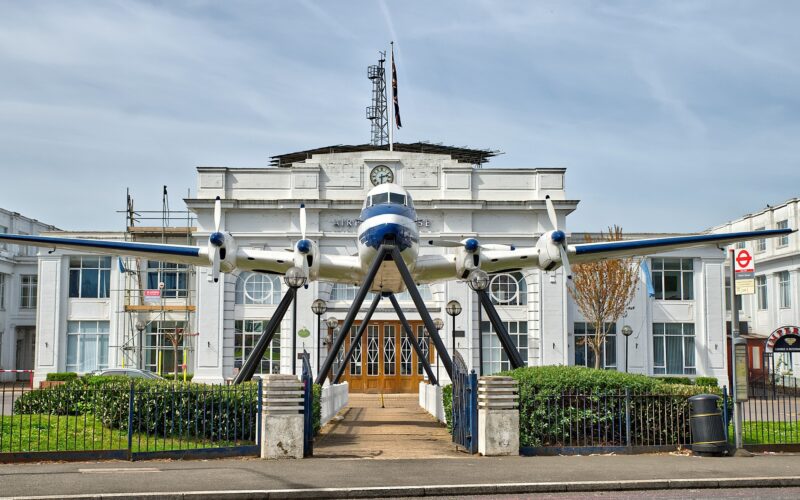The London borough of Croydon is known for being the most populated area of the capital of the United Kingdom (UK). In a past life, though, the area’s pivotal role in aviation brought it to the world’s attention.
Originally a town in the county of Surrey, Croydon was officially swallowed up by the London sprawl in 1965. Before then, its proximity to the capital put it in a perfect position to host the UK’s first major international airport.
But how was it that an unassuming town in the English countryside was able to become the central link between Britain and the international world – and having reached the top, why did it ultimately fall from grace to be surpassed by the beast that is London-Heathrow Airport (LHR)?
Humble beginnings
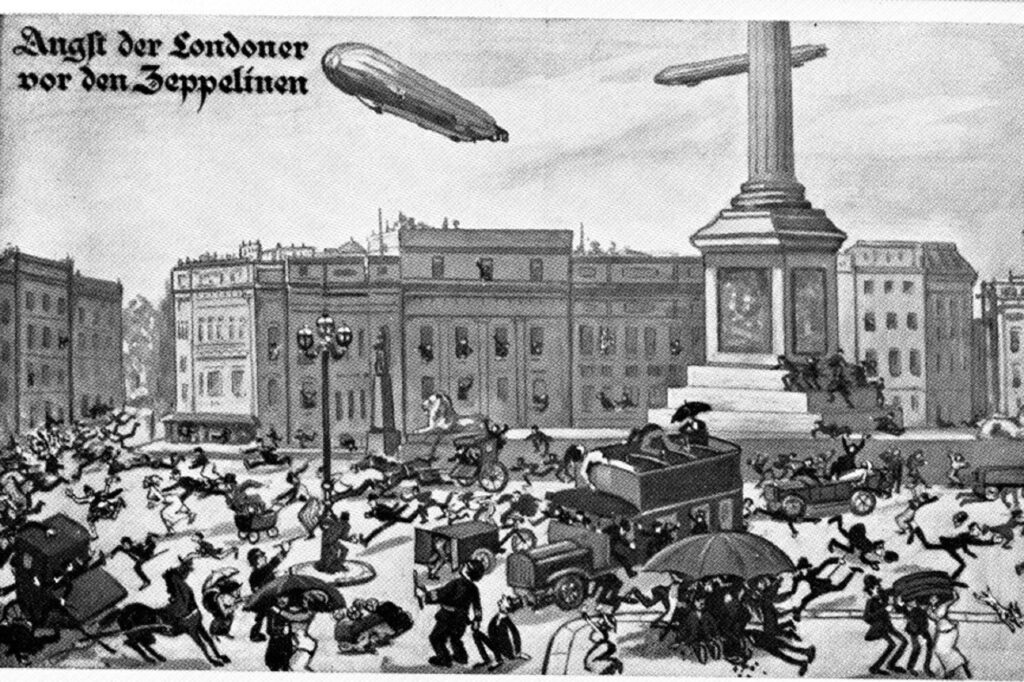
Croydon Airport began life as in 1915 as Beddington Aerodrome, a World War One airfield originally developed for emergency military aircraft landings but later adapted to counter German Zeppelin airship raids.
According to the Historic Croydon Airport website, which is run by the charity Historic Croydon Airport Trust, Beddington was one of ten aerodromes scattered around London, including Hounslow and Biggin Hill.
As World War I went on, Beddington Aerodrome played an increasingly prominent role, with the establishment of a new Royal Flying Corp Squadron being based there as part of the UK’s defense.
After the War ended, the aerodrome became a training center for the Royal Air Force (RAF), with even the future King George VI learning to fly there.
Hounslow Aerodrome
Croydon Airport may have become the first major international airport, but the honor of witnessing the UK’s first international commercial flight from the UK was bestowed on Hounslow Aerodrome.
Hounslow Aerodrome was temporarily operational from 1914 until 1920, but the first reported landing at Hounslow Heath, which had a long-established military heritage, was in 1909.
Throughout World War One, Hounslow played a prominent position in the training of pilots, defending attacks from Zeppelin airships and readying flight squadrons for battles over Europe.
After the war ended, in 1919 Hounslow Aerodrome saw the first domestic commercial flights in the UK.
The first flight arrived from Bristol and the first documented departure take off flew to Lympne Airport, but Hounslow’s major triumph came on July 14, 1919, when a Caudron aircraft arrived from Paris Airport-Le Bourget (LBG).
However, any hopes of long-term glory were dashed when Croydon Airport was selected to become the UK base for future commercial flights instead.
Establishing Croydon Airport
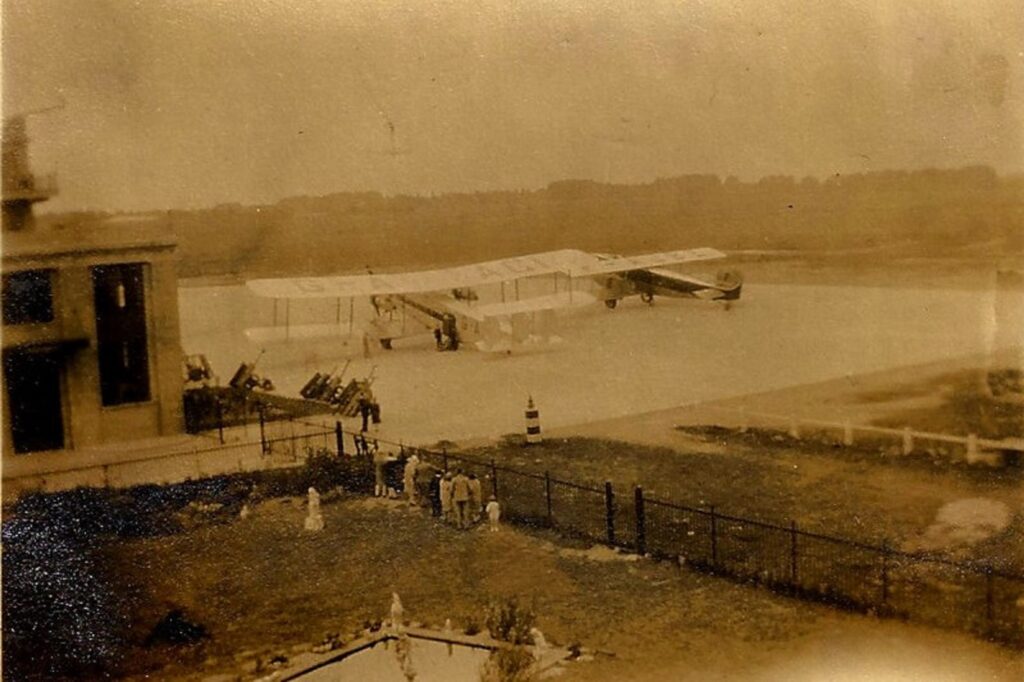
Croydon Airport began operating as London Terminal Aerodrome on March 29, 1920, establishing itself as the UK center for flights carrying passengers, mail and freight.
According to the Historic Croydon Airport site, newly established airlines such as Aircraft Transport and Travel (A, T &T) and Instone Air Line moved operations to Croydon when it opened, with Handley Page following suit in 1921.
The French airline Compagnie des Messageries Aeriennes launched a service from Paris on the very same day that Croydon first welcomed commercial services. Other early passenger services at Croydon Airport included routes to Amsterdam, Rotterdam and Berlin.
In 1920, Croydon achieved one of its many aviation world firsts when it introduced air traffic control and the aerodrome control tower.
The nascent British aviation industry had been searching for a way to organize aircraft arrivals and departures and found the solution in a 15-foot wooden tower with windows on all sides.
From this high viewpoint, air traffic controllers provided pilots with information about air traffic and weather conditions and used maps, pins and flags to record movements.
The reign of Croydon Airport
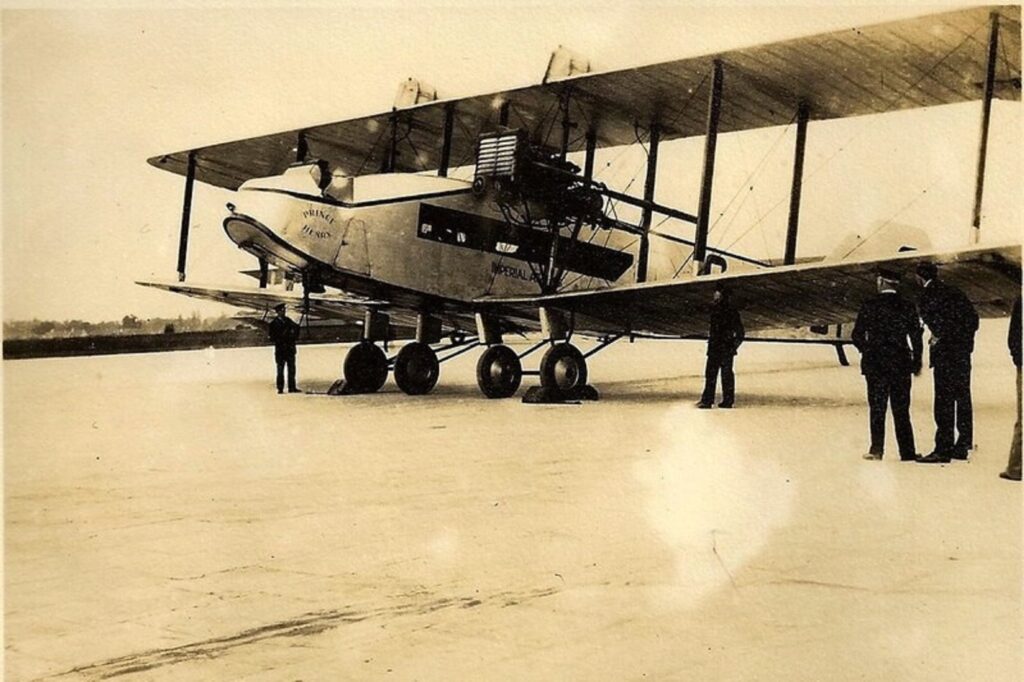
Through the early 1920s, routes to distant lands began to multiply, with new services established at Croydon Airport to Brussels, Cologne, Zurich and Basel, to name but a few.
The formation of Imperial Airways, created by combining several of Britain’s early airlines, was instrumental in the growth of Croydon Airport.
According to Historic Croydon Airport, in February 1923 the Hambling Committee recommended that three British airlines should be merged to help develop the UK aviation industry, which was struggling to compete with its European rivals.
The newly combined airline, subsidized by the UK government, boasted a 15-aircraft fleet that included De Havilland DH.34s, Handley Page W.8bs and Supermarine Sea Eagles from British Marine Air Navigation.
With no natural British competition, Imperial Airway expanded without much struggle, Eventually, it enabled Croydon Airport to connect with destinations as far away as India and Australia.
Sadly, in December 1924, an Imperial Airways De Havilland DH.34 crashed, resulting in the deaths of all eight people on board and a subsequent public inquiry.
The report into the inquiry, released on February 10, 1925, concluded that the crash was caused by an unknown mechanical defect, plus a subsequent stall aboard the aircraft during an attempted emergency landing.
Following the inquiry’s conclusion, the Croydon Aerodrome Extension Act 1925, initiating the expansion, redevelopment and modernization of the airport.
Croydon Airport’s redevelopment began in 1926, including plans for what would eventually become the world’s first purpose-built airport terminal.
The birth of the modern terminal
We had a very full Open Day on Sunday 4th February and thank you to everyone who came along. If you were hoping to come for one of our tours, we would encourage you to watch our social media pages and website for our next Open Day will occur on March 3rd. pic.twitter.com/5sY8TguBlL
— Historic Croydon Airport (@CroydonAirport) February 6, 2024
On January 30, 1928, the new airport terminal was officially opened. The new look Croydon Airport included extended runways and a 50 feet tall control tower, then the largest in the world.
Some of the features introduced at the new terminal have become standard today, but were considered significant innovations at the time.
A booking hall was introduced for the processing of passengers, including check-in desks and sections for luggage to be weighed.
There was even an arrival and departures board featuring multiple clocks positioned on a large pillar, indicating when flights would be landing or taking off.
The booking hall then linked through to immigration and security checks where passengers would be quizzed by the Criminal Investigation Department, immigration representatives and even medical staff.
Croydon Airport also introduced the idea of separating passengers from those departing to those arriving , therefore reducing congestion and increasing efficiency.
World War II
The 1930s saw passenger numbers surge at Croydon, with 44,000 using the airport in 1931 and 120,000 just four years later in 1935.
According to Historic Croydon Airport, in 1935 Croydon Airport was processing 84% of all the UK’s air cargo and 49% of all passengers within the country.
The route between Croydon and Paris became the busiest in the world, and in 1937 a little-known carrier called British Airways began operating European flights from the airport.
In November 1938, the British government decided to combine British Airways and Imperial Airways to form British Overseas Airways Corporation.
However, in 1939 the boom in air travel came to an abrupt halt when the Second World War broke out in Europe.
What had become a flourishing airport, marveled at around the world, then became part of the UK’s defense against the German Luftwaffe.
The airport became Royal Air Force Station Croydon and it was heavily bombed on August 15, 1940, with the airfield and terminal being struck.
During World War II, Croydon also became a hugely important transport hub for thousands of military personnel being flown in and out of Britain.
Post-War
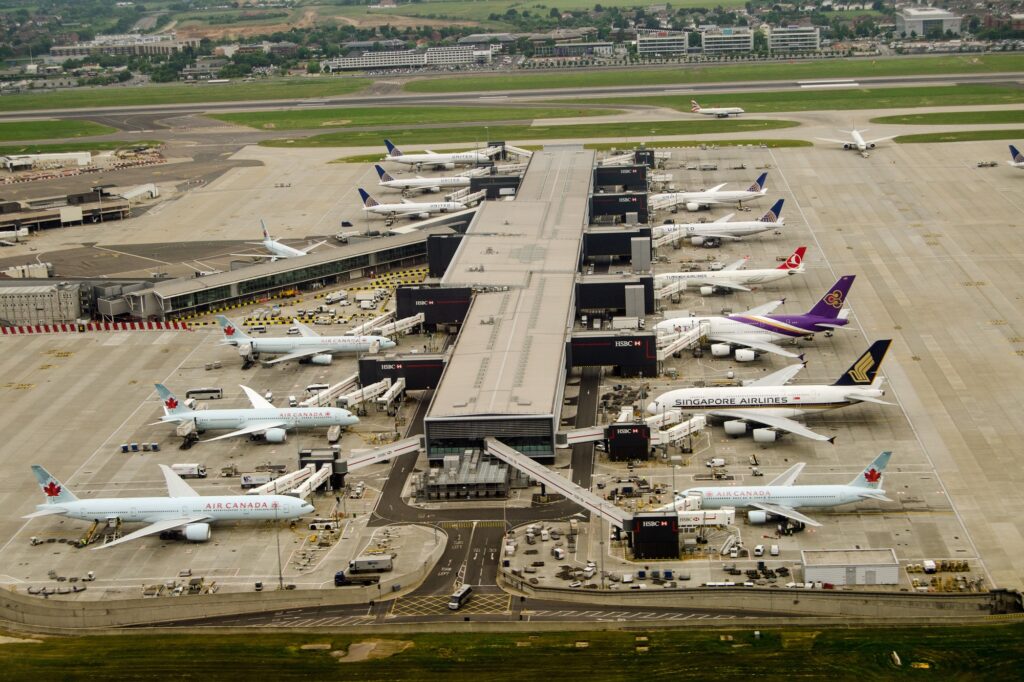
Following the Second World War, Croydon Airport was unable to live up to its former glory as competitor travel hubs dotted around the UK began snapping at its heels.
An airfield established in 1929, next to a small village outside London called Heathrow, had been developed in 1944 to service long-distance aircraft during the war. When hostilities ended, though, the government decided to continue the site’s development for civil aviation. Consequently, London Airport was opened in 1946.
Though Croydon Airport continued to serve regional routes until 1959, after the Second World War it became clear that it could not develop for a new generation of travel due to a lack of space for longer runways, leaving the perfect opening for Heathrow in Hounslow.
In 1966, as London Airport continued to expand and other commercial airports appeared around the capital, the name was changed to the more familiar ‘London Heathrow’.
Today, Heathrow continues to thrive. In August 2024, the airport announced that over eight million passengers passed through during the previous month, with numbers surpassing 1.8m passengers in one week for the first time.
Croydon Airport, which officially closed in 1959, can still be seen today on special open days, giving visitors the chance to experience the remnants of what was once the UK’s first major international airport and a pioneer in how we all still travel today.

